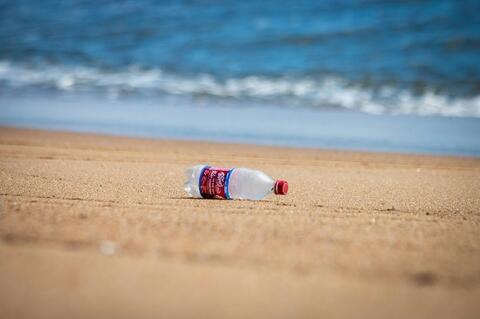
Plastic pollution: towards a global treaty limiting production?
In Ottawa, negotiations aimed at signing an international treaty limiting plastic pollution moved in the right direction during a penultimate cycle, which ended Tuesday April 30. A summit placed under the aegis of the United Nations and attended by Marie-France Dignac and Jean-François Ghiglione, two researchers at Sorbonne University. The establishment is the first French university to be accredited by the United Nations Environment Program, allowing it to take part in international negotiations.
One more step towards the end of plastic. During the fourth intergovernmental round of negotiations on plastic pollution, which was held from April 22 to 30 in Ottawa (Canada), with representatives of 175 countries who discussed a text aimed at limiting the production of this ecological time bomb on a global scale. The objective of these negotiations, the last round of which will take place next fall in South Korea, is to develop a legally binding international instrument on plastic pollution, particularly in the marine environment, while global production has reached 353 million tons in 2019 (of which only 9% were recycled), according to the OECD.
A step forward towards a global treaty
A dazzling advance compared to the previous round of negotiations, which was held last year in Nairobi (Kenya), and where delegates had “gone in circles”, according to Santos Virgílio, Angola's chief negotiator. “There were no conclusions. We had arrived at an illegible text of 70 pages,” laments Marie-France Dignac, research director at the National Research Institute for Agriculture, Food and the Environment (Inrae) and member of the Institute of Ecology and Environmental Sciences of Paris (Iees), (link in French) an organization attached to Sorbonne University.
During the recently concluded session, 28 countries, including France, signed a declaration on primary plastic polymers, the materials that form the basis of the manufacture of plastics, in order to reduce their production. Rwanda and Peru have even committed to reducing their production by 40% between 2025 and 2040. “We are asking that manufacturers demonstrate more transparency by revealing in particular the list of chemical additives. There are more than 16,000 of them in commercially sold plastics, 3,000 of which are dangerous,” warns Jean-François Ghiglione, CNRS research director at the Banyuls-sur-Mer Oceanological Observatory (Sorbonne University/CNRS).
With Marie-France Dignac, this trained biologist who turned to ecotoxicology, a discipline which studies the effects of toxic substances on the environment, helped to guide representatives of several countries to distinguish the true from the false. “We are trying to put an end to preconceived ideas like biodegradable plastics, which do not degrade as well as we think. It’s a market that will not take off,” insists Jean-François Ghiglione. The researcher also protests against the increased presence of representatives of lobbies at the summit, who represented around 10% of those present, and are trying to influence the least developed countries. “They were there to say anything, for example that there are no chemicals added to a plastic water bottle,” continues Jean-François Ghiglione.
“Plastic is seen at all levels of the food chain”
If the lobbies were more numerous (+37% compared to the last session), the number of scientists was also increasing with 59 independent researchers from all over the world to represent the international scientific coalition for a binding treaty which today has more than 350 scientists around the world. A specialist in soils and the carbon cycle, Marie-France Dignac has been working for approximately ten years on the impact of plastic pollution on soils. A subject that is “not yet very well understood,” explains the researcher, and which particularly affects agricultural soils. According to a study led by post-doctoral fellow Gabin Colombini, the quantity of microplastics accumulated on agricultural soil can reach more than 400 kg per hectare after around twenty years, the equivalent of around 1,400 50 cl bottles per ha. And which will potentially end up on our plates.
"Plastic pollution is visible at all levels of the food chain,” adds Jean-François Ghiglione, who recalls that the Mediterranean is the most polluted sea in the world. “In certain areas, there are as many microplastics as zooplankton, which fish feed on. More than 14,000 mammals and 1.4 million seabirds die from ingesting plastic each year. I see it, it’s in front of my house,” he says. By the end of the year, the final round of negotiations should result in a treaty aimed at putting an end to plastic pollution. “We would have to reduce plastic production by 70% to remain within the Paris agreements,” recalls Marie-France Dignac. A task that promises to be long-term.
Publication of the collection “Plastic: such a practical poison”
Around forty researchers from the Sorbonne University Alliance have written twenty fact sheets on the problem of plastic, driven by a concern for pedagogy and the imperative of rigor. The authors are chemists, agronomists, microbiologists, virologists, ecotoxicologists, neuroendocrinologists, ecologists, oceanographers, marine biologists... Only such a variety of skills makes it possible to approach a crisis of universal magnitude like that of plastic pollution.